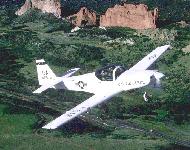
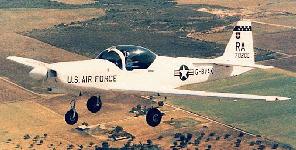
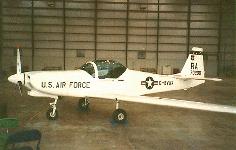
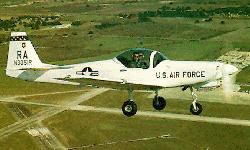
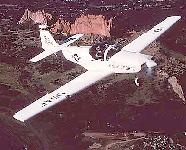
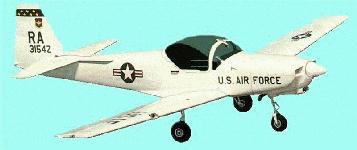
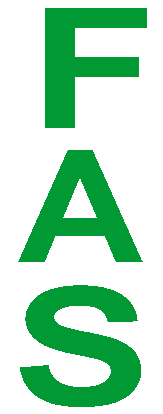


The T-3A Firefly is a propeller driven aircraft used by the U.S. Air Force's Air Education and Training Command to screen pilot candidates by exposing them to military style traffic patterns, aerobatics and spins. It replaced the T-41 aircraft which is incapable of performing these maneuvers. It also teaches students takeoffs and landings, stalls, slow flight, ground operations and mission planning.
The T-3A is a Federal Aviation Regulation Part 23 aerobatically certified aircraft. It enables students to learn basic military style maneuvers which will be refined and built upon in future aircraft. The instructor sits in the left seat and the student in the right seat. The cockpit has dual throttles, stick controls, electric elevator trim and a sliding canopy. The aircraft has a fully composite structure, an integral fuel tank in each wing and tricycle style, fixed landing gear. The fuel is automatically transferred by an engine-driven pump.
The T-3A is the newest version of Slingsby Aviation's T-67 Firefly line of military training aircraft. The prototype began flying in the summer of 1991, and the Air Force accepted delivery in February 1994. Of the total fleet of 110 T-3s which originally cost $32 million, 57 were stationed with the Air Force Academy's 557th Flying Training Squadron in Colorado Springs, with another 53 with the 3rd Flying Training Squadron in Hondo, Texas. Final assembly of the British-made T-3 was done in Hondo by Northrup Grumman.
The Air Education and Training Command at Randolph AFB announced on 12 October 1999 that the T-3A Firefly would be dropped by the Air Force, after having been grounded for more than two years. In 1998 the Air Force intiated the privately run Introductory Flight Training which uses private flight schools to screen pilot candidates. The success of this program persuaded the Air Force to drop the T-3 from service. The T-3 fleet was grounded in July 1997, following an inexplicable engine failure in Colorado. Three instructors and three students were killed in crashes since the plane went into service in 1994. Two crashes were the result of pilot error, while a third occurred because of a stall condition from which the pilot was unable to recover. The predecessor T-41 had no fatal accidents in 30 years of flight, although the T-41 was incapable of performing the aerobatics and spins that were the hallmark of the T-3. The T-3's engine had failed 66 times at takeoff or landing, and the Air Force grounded 57 of the planes on 10 occasions due to problems with the engines, fuel systems and brakes.Specifications | |
| Primary Function | Primary screener in specialized undergraduate pilot training |
| Contractors | Slingsby Aviation Ltd., and Northrop Worldwide Aircraft Services Inc. |
| Power Plant | One Textron Lycoming Ltd. AEIO-540-D4A5 engine |
| Thrust | 260 horsepower |
| Length | 24 feet, 9 inches (7.5 meters) |
| Height | 7 feet, 9 inches (2.3 meters) |
| Wingspan | 34 feet, 9 inches (10.6 meters) |
| Maximum Takeoff Weight | 2,550 pounds (1,159 kilograms) |
| Speed | 155 miles per hour (.21 Mach) |
| Ceiling | 19,000 feet (5,790 meters) |
| Range | 352 miles (305.89 nautical miles) |
| Armament | None |
| Crew | Two (student pilot and instructor pilot) |
| Unit Cost | $295,000 |
| Date Deployed | February 1994 |
| Inventory | Active force, 112; Reserve, 0; ANG, 0 |





